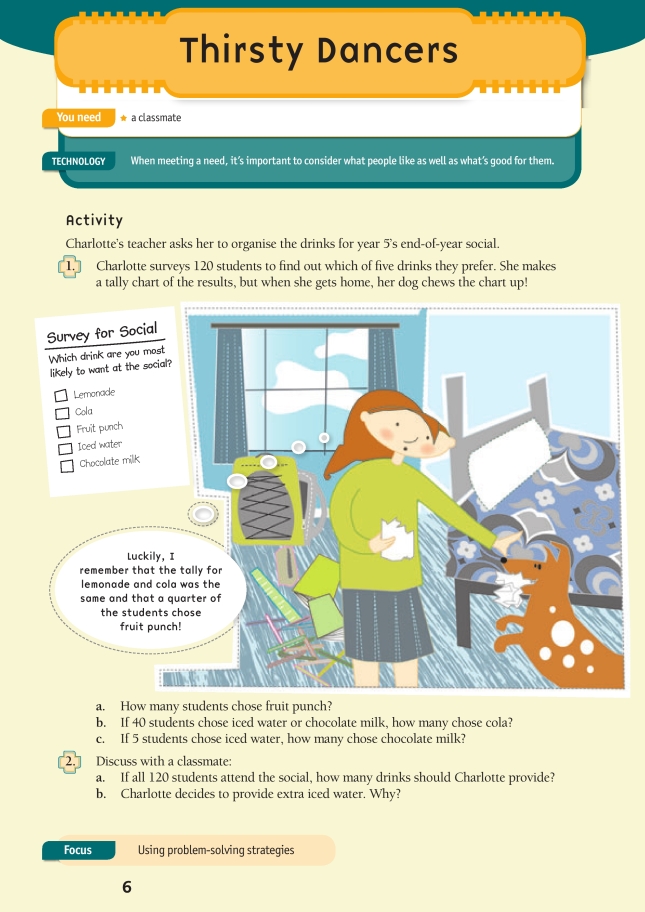This is a level 3 activity from the Figure It Out series.
A PDF of the student activity is included.
Click on the image to enlarge it. Click again to close. Download PDF (174 KB)
A useful technique when solving a problem is to write out what you know and what you need to find out. In this activity, the number of students choosing one particular drink is used to find the numbers of students choosing other drinks. Students could use deductive reasoning or trial and error to solve this problem.
FIO, Technology Rules!, Levels 2+-3+, Thirsty Dancers, page 6
This activity involves problem solving to calculate missing amounts. Trial and error is a legitimate approach, although it is usually less efficient than deductive reasoning.
Provide opportunities for the students to explain the strategies that they used to find the missing amounts. Those who used trial and error can discuss how they decided which values to trial. Help the students to articulate their thinking processes by asking them why they didn’t start with certain values, for example, why they didn’t start with 2 students choosing lemonade or 100 students choosing cola.
Using logic to solve problems develops the key competency thinking.
Technology-related student activities
- Conduct surveys to discover student preferences or special needs in food and drink for a particular event.
- Plan, prepare, and serve a meal based on preferences or needs.
- Work within a budget or with limited resources to produce a tasty and nutritious snack.
- Experiment with existing recipes to see if people’s needs can be catered for (see www.techlink.org.nz/Casestudies/Technological-practice/Food-and-Biological/Gluten-free-cookies/index.htm).
Exploring the technology-related context
Authentic contexts are important when teaching technology. Units based on topical events and needs give purpose to activities and allow students to be active participants in planning and evaluating their work.
Answers to activity
1. a. 30. (120 ÷ 4 = 30; I know 12 ÷ 4 = 3, so 120 ÷ 4 = 30; or: 3 x 4 = 12 and half of 12 is 6, so half of 120 is 60 and half of 60 is 30; or: I know 1/4 of 100 is 25 and 1/4 of 20 is 5, so 25 + 5 = 30.)
b. 25. (120 – 40 = 80. 80 – 30 [fruit punch] = 50 [lemonade and cola]. 50 ÷ 2 = 25.)
c. 35. (40 – 5 = 35)
2. a. Answers will vary. 120 is enough for 1 drink per student, but some students may want more than one drink.
b. Discussion will vary, but iced water is a sensible choice. If all the other drinks run out, anyone can drink water.
